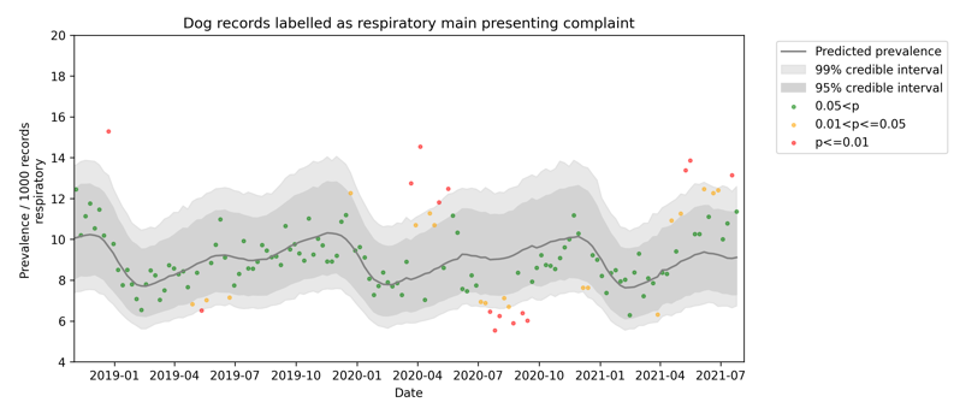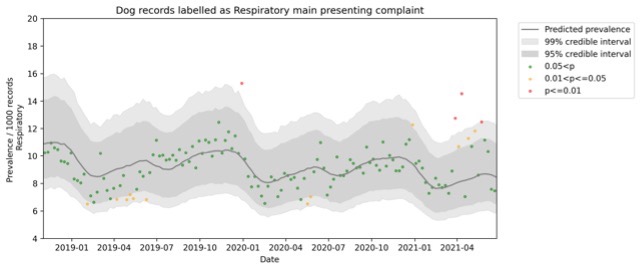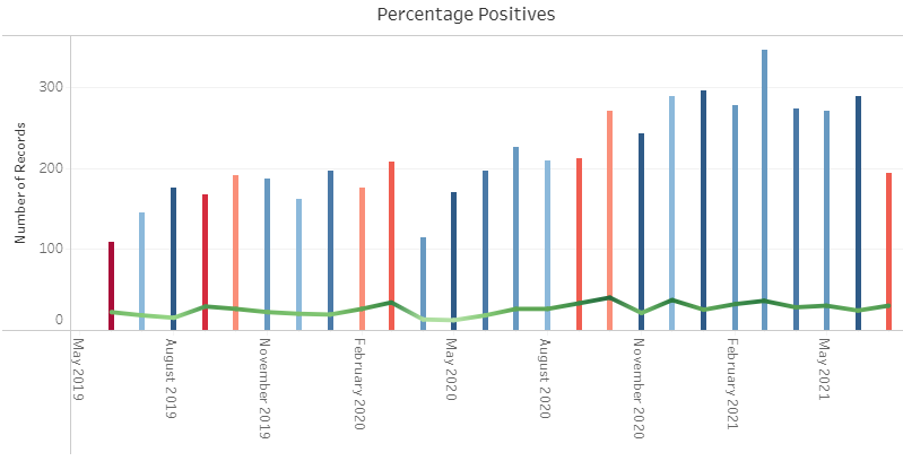RDI: Update on kennel cough in dogs

This work is a continuation of our previously published RDI available here
Findings
The two plots below show the weekly numbers of respiratory disease MPC consultations in the SAVSNET network; the first figure has slightly newer data, and always uses a new statistical model that tries to better account for the rapid changes in overall consultation numbers associated with various phases of the pandemic lockdown. Both show that the respiratory disease MPC has a gentle seasonality, lowest in the spring and approximately doubling by the autumn. This year, there have been several weeks where the data is modestly but significantly higher compared to previous years (pink / orange dots). However, the most recent data seems more typical. This might suggest the kennel cough season has been a little worse than we would expect based on previous pre-covid years. We will continue to monitor this trend in the coming weeks to see whether future data returns to the previously observed seasonality. We will also look to see whether this pattern is generalized across the UK, or driven by more local changes. Although not much is written about the seasonality of canine respiratory pathogens, it seems reasonable that as in humans, some may be more transmissible at certain times of the year, perhaps driven by climate or behaviour changes leading to increased chances for mixing.
 In a parallel analyses of diagnostic data from participating laboratories shown below, there appears to have been a gradual increase in laboratory submissions being tested for Bordetella bronchispetica, one of the most well recognised pathogens associated with Kennel Cough. The percent testing positive (green line) has remained relatively consistent. It of course would be most interesting to understand more about both the animals that tested positive and those that were negative.
In a parallel analyses of diagnostic data from participating laboratories shown below, there appears to have been a gradual increase in laboratory submissions being tested for Bordetella bronchispetica, one of the most well recognised pathogens associated with Kennel Cough. The percent testing positive (green line) has remained relatively consistent. It of course would be most interesting to understand more about both the animals that tested positive and those that were negative.


This RDI is part of ongoing work in SAVSNET-Agile.
You can find out more about the range of our surveillance activities, and the statistical methods we use, in our regular reports in the Veterinary Record.